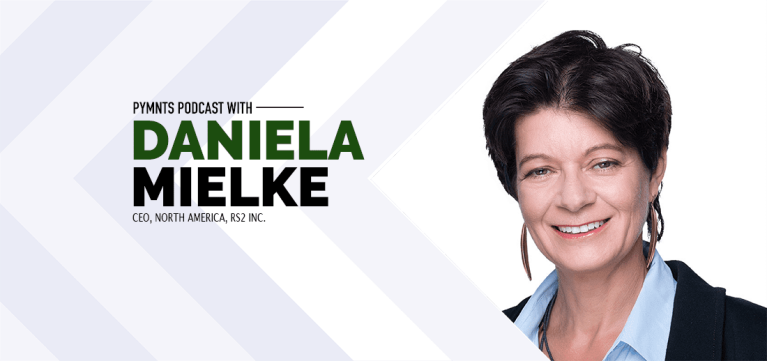For software companies, the quickest route to top-line and margin torque might be to offer payments to their merchant customers — onboarding those merchants and processing payments and payouts.
As Daniela Mielke, CEO of RS2 Software, told Karen Webster in a recent podcast, the strategy might not be the best one.
The conversation came against a backdrop where software companies — regardless of vertical or specialty — are facing increasingly competitive landscapes.
In some cases, said Mielke, “some software companies just want to sell their software — and they need a very easy, global payment system that allows them to sell that software and to collect payments that is offered through one application.”
But at a high level, independent software vendors (ISVs) have increasingly recognized that they can embrace payments to increase their revenues — so much so that some firms glean the majority of their top lines, at about 90 percent, from offering payments.
“I think many ISVs see that and they think, ‘Well, we should just become a payments company,’” said Mielke. “And I think that is a mistake.”
Advertisement: Scroll to Continue
In the quest to drive top line and margins, these ISVs may be overlooking the specific requirements for customers within a vertical, and they may be missing the chance to offer a creative, user-driven experience.
Simply put: There’s room to fold payments into the equation, without having to manage payments as a full-fledged part of the business.
Keeping An Eye On The Knitting
In other words: Stick to the proverbial knitting.
Mielke noted that in some cases, payments can indeed be part of the “knitting.” Online marketplaces have to be able to onboard merchants quickly, and must be able to collect, distribute and send payments.
“The marketplace has to be able to take control over payments and might have to go ‘all the way’ and become what we call a payments facilitator, or PayFac,” she said.
For other software firms, the decision should depend on the size and maturity of the company itself — and the specific problems it aims to solve for its merchants.
Not all that long ago, that same software company would have gone all the way to becoming a merchant of record or a PayFac in the drive to offer payments and push margins.
But now, said Mielke, there are several companies — RS2 among them — that, through integrated platforms, help those same firms “look and behave like a PayFac” without necessarily becoming one. Services on offer from the partner include underwriting and dynamic settlement — and, of course, the payments technology itself.
“Basically, the partner is the merchant of record and lets the ISV look like a payments facilitator,” said Mielke.
Asked by Webster whether, with the emergence of the partnership option, there might be a slowdown in the rush for firms to become PayFacs, Mielke said it is still relatively early days for the “PayFac-enabled” companies.
“I think a lot of ISVs are still going the ‘whole way’ just for lack of knowing what is really available in the market,” she said. “When we speak with ISVs that are thinking about becoming PayFacs, they are usually quite surprised to hear of other options.”
The integrated, partnership-driven model makes sense across shared economy platforms where the underwriting of merchants — especially micro-merchants — can be quite risky, or merchants’ business is seasonal.
She offered the example where a sharing economy platform might underwrite micro-merchants. And although we haven’t yet seen such a trend, it may not be unthinkable for platforms also acting as PayFacs to “unwind” their structures to focus on the core of their businesses.
Avoiding The ‘Knee Jerk’
Very rarely, said Mielke, do ISVs win with the “knee-jerk reaction of becoming a PayFac and capturing those additional revenues.”
The ISVs that look at the long term and examine their value proposition — and perhaps consider becoming an independent sales organization (ISO) — in a sense become a reseller of the payment to the merchant. That way, Mielke explained, they can control the pricing and terms of that service across flexible modules, while retaining at least some of the margins — driving more value to the ISV than they would by simply becoming a PayFac.
As Mielke told Webster: “The payments are not the core differentiator for an ISV … the focus of the software company should be on what they really need for their value proposition … and must always be on the software and the experience.”




